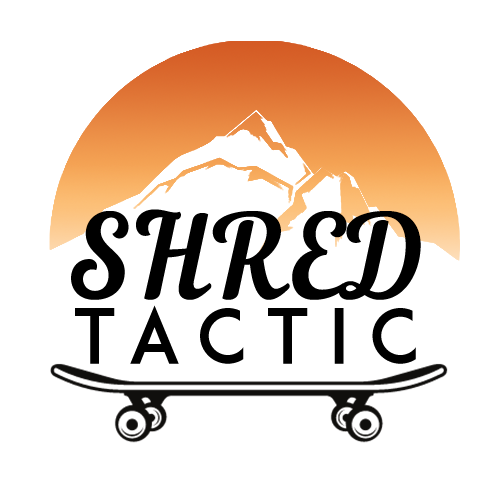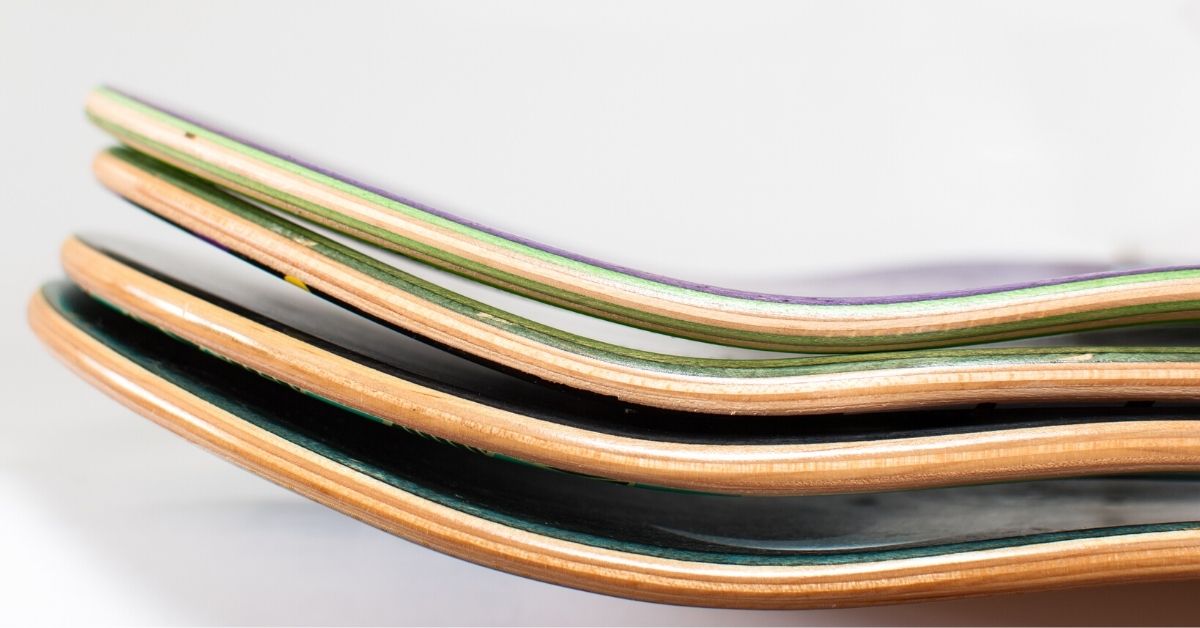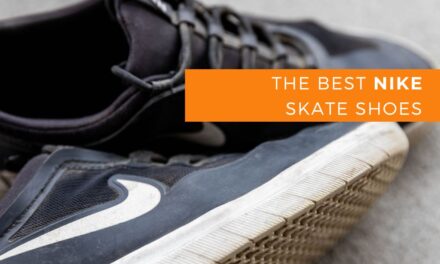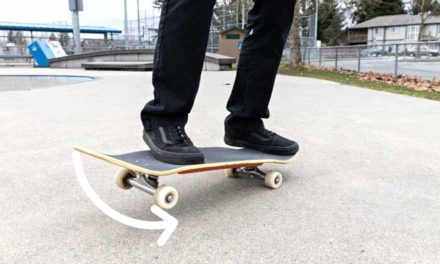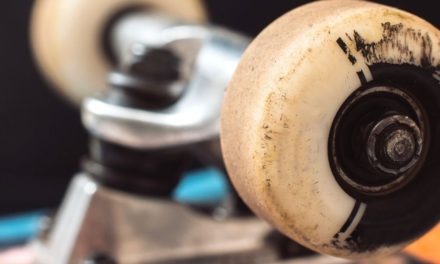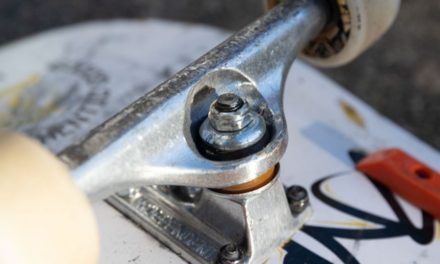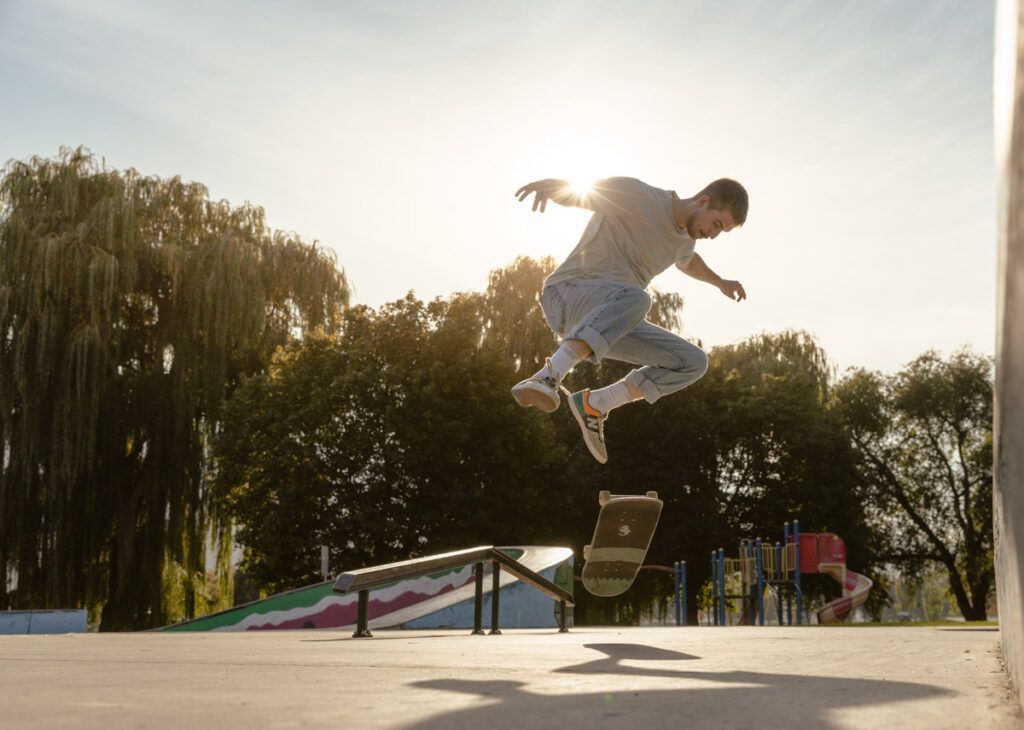When you’re in the market for a new skateboard, figuring how much it’s going to cost is at the top of mind. Depending on your skill level and budget, you may be unsure if it’s time to build a custom skateboard or go with a complete from your local shop. With building a custom skateboard you get to reap the rewards of higher-quality components, but have to deal with higher costs compared to a complete.
On average, it will cost $110 for a high-quality complete skateboard, or $180 for a custom skateboard with higher-end components. These prices can go up depending on the brand and build material of your components. Things such as hollow-forged trucks or ceramic bearings can put the cost over $200.
Just because there are lighter and faster options, doesn’t mean they make a big impact on your skating. In fact, I’d argue that most beginner to intermediate skaters wouldn’t notice the difference between a $150 setup versus a $250 setup.
Because of that, the amount you need to spend on a high-quality skateboard might not be as much as you expected. Let’s break down the price of different components to build a skateboard, and give you some working averages to save for!
How Much Do Skateboard Parts Cost?
Starting by breaking down each part of a skateboard, here are the price ranges you can expect to pay in USD.
1. Skateboard Decks: $30 – $65
The skateboard deck is one of the most important pieces of the setup. Decks come in a variety of different materials, lengths, and widths, but are most commonly made with 7-ply maple with a slight concave to help with tricks. In most cases, the width of the deck doesn’t affect the price. Instead, the price is affected by brand and graphics.
At any skate shop you visit there are three main boards you’ll find:
– Pro-Model & Branded Decks
These decks often have the coolest graphics but unfortunately cost the most amount of money. Just as you pay more money for a T-shirt with a logo on it than a plain colored one, it’s the same for skateboard decks. Typically in the $55 – $65 range at most skate shops, you pay a premium for the brand name graphics on the board.
However, some brands have unique shapes and concave to them that makes them preferable over blank or shop decks with more generic shapes. This is something that’s not a huge deal for beginners but is worth experimenting with as you progress in your skating.
– Blank Decks
Blank decks are decks without any graphics on them and usually have a solid color on the bottom. They tend to have a more generic shape and feel average to skate on. In my experience they are usually equal quality to skate as a pro-model deck, however, some have worn out faster than more expensive decks I’ve skated.
The price for a blank deck is around $35 – $45 depending on where you look. They’re a great option if you’re worried about snapping your board or just getting started in skateboarding.
– Shop Decks
Lastly, shop decks are only available at local skate shops within your area. These decks have custom graphics branded to the shop you buy them from. They’re an awesome way to support local and rep your favorite skate shop while at the park. I often skate shop decks since they are cheaper, but still have cool graphics on them, unlike a blank deck.
These decks range in price from $30 – $45 depending on which shop you buy from.
2. Skateboard Trucks: $50 – $120 For A Set
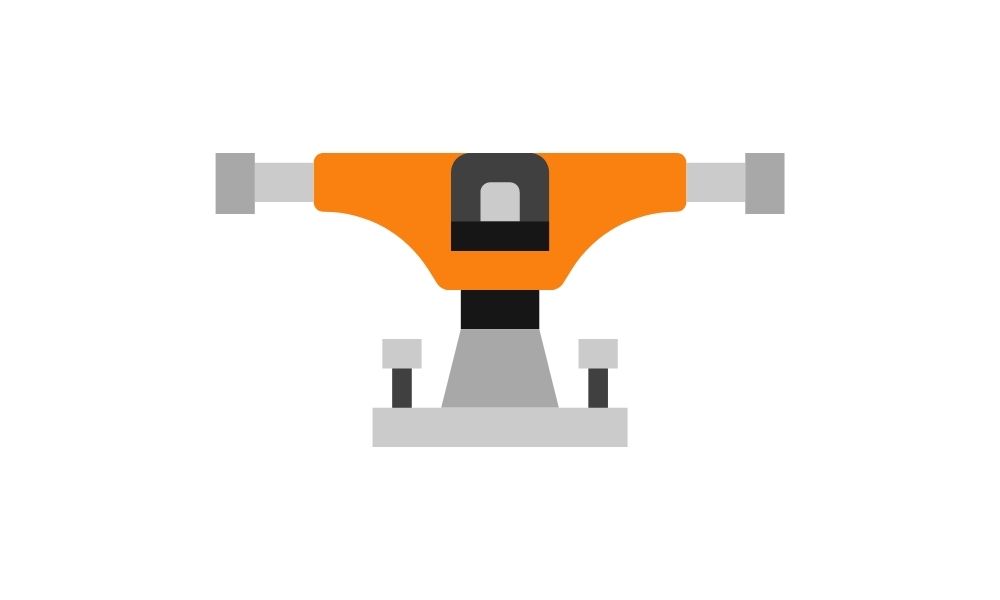
Skateboard trucks are the next most expensive component for your setup. It’s a bit deceiving when you look at the prices of trucks since they are sold individually. When you’re building a skateboard, you need to buy a set for obvious reasons. Since trucks range in price depending on the brand, weight, and profile, the prices vary broadly.
For most skaters, especially beginners, getting a cheaper set of trucks is a great way to go. You don’t need the lightest set of trucks and a low-profile kingpin won’t be noticeable if you’re just learning to grind.
However, if you are looking for a more high-performance board, getting something like hollow trucks is a mega upgrade that makes your board feel more tactile. These trucks aren’t made of solid metal so they’re significantly lighter making tricks slightly easier. Just be prepared to pay double the price of a standard truck.
3. Skateboard Wheels: $15 – $50
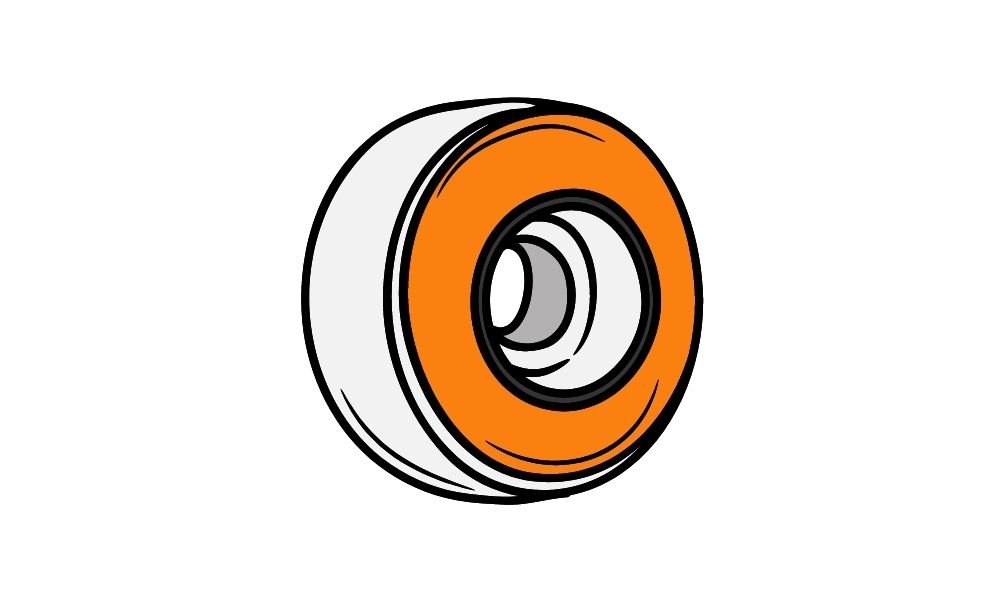
Skateboard wheels are incredibly important if you want the most enjoyable experience on your skateboard. If you plan to cruise around town without doing tricks, the wheels you’d choose vary drastically compared to if you want to skate street.
I highlight these differences in this wheel buying guide for beginners.
Now the price of skateboard wheels depends on the brand and materials the wheels are made with. Some wheels will have plastic centers to improve rolling speeds, while others will have multiple hardnesses of urethane for enhanced performance. For most skaters, getting an in-between wheel is all you need.
At $30, the wheels in this price range seem to balance cost and durability the best from my experience. Going cheaper will get you a less durable wheel that’s more prone to flat spots, while more expensive will have higher-end urethane for better grip, sliding ability, and durability.
4. Skateboard Bearings: $10 – $70
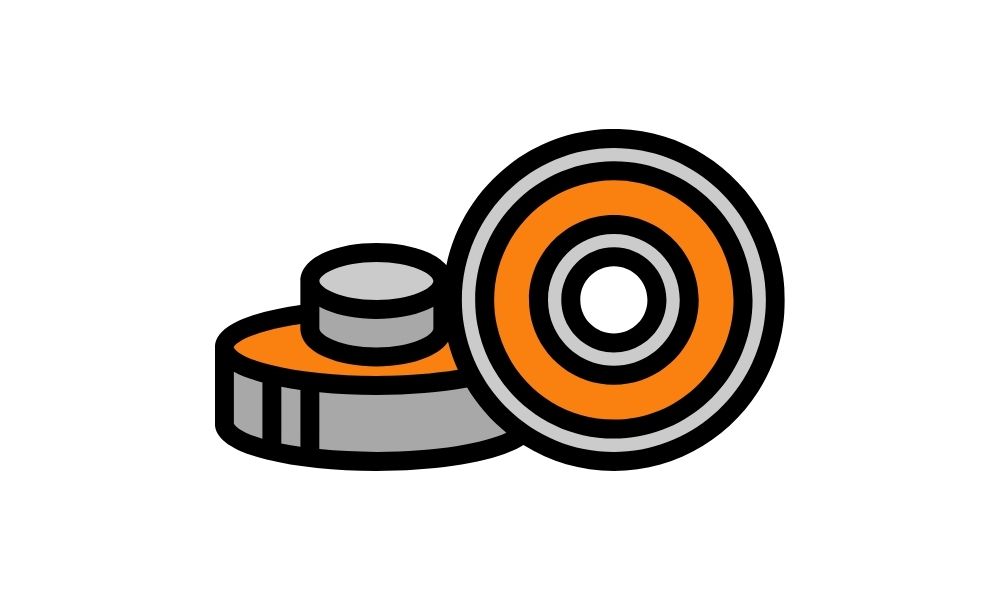
Bearings are what goes inside of your wheels to allow them to spin. Skate bearings range in performance but I’ve always found Bones Reds to be some of the best, longest-lasting bearings for a good price. Higher-end bearings can cost over $150 such as the Bones Swiss Ceramic Bearings.
The difference between a cheap bearing and an expensive bearing is how smoothly the bearings balls can rotate against the outer and inner bearing race while under load. With ceramic bearings, for example, they can roll faster with less friction, while being able to better maintain their speed under the weight of landing a trick. Regular steel bearings have slightly more friction, making top speeds a bit harder to reach.
Now unless you’re planning to bomb hills or shred the bowl at warp speeds, you don’t necessarily need a super expensive bearing. Instead, opt for something that’s reputable and long-lasting.
5. Grip Tape: $5 – $15
Grip tape may look largely the same, but the different brands offer a variety of coarseness and durability. As a general rule of thumb, the more expensive grip tape is easier to apply since it’s usually perforated so air bubbles don’t form on application. Likewise, it has a water-resistant adhesive so even if your grip tape gets wet, it won’t peel off your deck.
Cheaper grip tape may feel nearly the same to skate on, but tends to be more brittle on application. It’s more likely to rip when applying and can wear out in certain spots faster.
I’ve skated a lot of different grip tape over the years and Jessup is one of my favorites. I explain why along with other good grip tape options in this guide to the best grip tape for skateboarding.
6. Hardware: $2 – $5
Lastly, the most insignificant but crucial piece of your setup is the hardware. These are packs of nuts and bolts to attach your trucks to your deck. The cost difference usually means the bolts come in some type of different color. All hardware is essentially the same, so buy whatever one you like best.
Example Cost Break Down Of A Custom Skateboard
Based on the average price ranges in the last section, the total cost of a custom skateboard setup is $112 – $325. To show you an example of what components would total in this range, I built a couple of setups from Tactics Skate Shop.
– Example Setup 1 – $314.70
To show you how expensive a custom setup can get, here’s a build I put together with some of the best components around.
This Setup Includes:
- Almost 8.125 Deck
- Tactics Grip Tape (Free)
- Thunder Hollow Light Trucks x2
- Spitfire Formula Four 54mm 97a Wheels
- Bones Ceramic Super Red Bearings
- Thunder Allen Key Hardware

– Example Setup 2 – $141.70
This second example is still considered a high-quality skateboard build, but I chose parts that aren’t necessarily top of the line such as the trucks and wheels. At the time of writing some of these parts were on sale allowing for a slightly reduced price.
The Setup Includes:
- Tactics Icon Shop Deck
- Tactics Grip Tape (Free)
- Tensor Alloy Trucks x2
- Bones OG Wheels 100a 53mm
- Bones Super Reds Bearings
- Thunder Allen Key Hardware
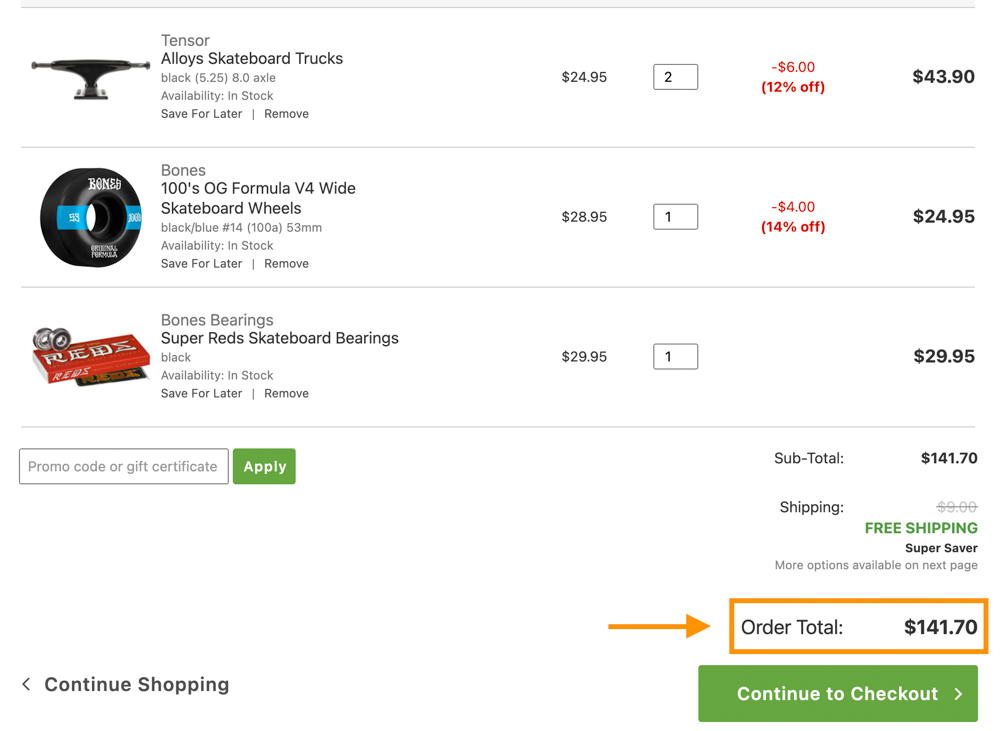
– Example Setup 3 – $109.95
In this example, I went with a complete deck instead of choosing my own components. With completes, you get a fully-built skateboard for a cheaper price than a custom-built one. The trade-off is lower quality components such as trucks and bearings, but they’re absolutely worth it for those looking for their first proper skateboard.
The Setup Includes:

With these different examples, you can start to get an idea of how quickly prices can change based on the components you choose. I would suggest spending on a good set of wheels, trucks, and bearings while saving money on the skateboard deck, grip tape, and hardware by opting for the cheaper options.
Additional Costs To Consider When Building A Skateboard
Now before you start narrowing down a budget for your new custom skateboard setup, there are some other costs you should think about that add to the total.
Risers
Risers are plastic pads that are placed between your trucks and the deck to allow for larger wheels. If you want to put 56mm+ wheels on your board, risers will ensure they can spin freely without causing wheel bite. The size of the riser will depend on how big of a wheel you intend to put on your skateboard, but they will cost around $5 for a set.
Skate Tools

Although you can maintain your skateboard with your standard set of wrenches and a screwdriver, a skate tool is a more compact and easy way to fix your board. Whether it be to build your skateboard or tighten your trucks at the skatepark, a skate tool can fit in your pocket, unlike your socket set.
A skate tool costs around $15 and is crazy convenient for any skater. I talk about the pros and cons of these tools more in-depth in this post.
Wax

Once you start practicing your first ledge and rail tricks, wax is going to become your best friend. By rubbing it along a ledge or rail, it makes your board slide easier without getting stuck. Although many skateparks are frequently waxed by anyone who’s skating there, there are times when your favorite rail is more sticky than you remember. A quick run of your wax along it and it’ll be sliding like butter again.
Wax is largely the same no matter which brand you go with, but it will typically set you back around $7.
Skate Shoes
No matter how good your setup is, the wrong footwear makes skateboarding one heck of a lot harder. It’s important to have a set of skate shoes to ensure you have the best grip and board feel while practicing new tricks. Although you’re probably familiar, skate shoes have a flat bottom to give you the most contact with the skateboard. They also have reinforced seams and extra rubber around the outsole to ensure they hold up against your grip tape. If you don’t already own a pair of skate shoes, this list of the 24 best skate shoes will set you in the right direction!
Unfortunately, shoes are not as cheap as risers and wax and will set you back at around $75.
Helmets & Pads
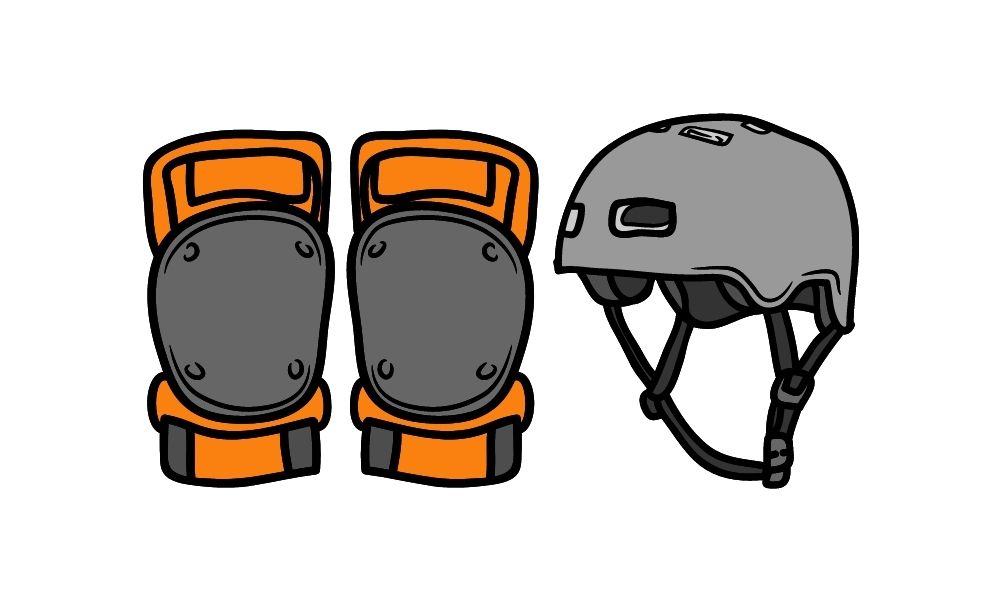
Now I’m not your mom but helmets and pads can be a great option for those worried about getting injured or just learning. As I’ve gotten older and have a job that requires me to be in one piece, I’ve begun opting to wear wrist guards and helmets while skating. Although you don’t always need them, they’re an added level of security that makes a big difference when you do inevitably hit the deck.
The average certified skateboard helmet costs $55 while a set of wrist, knee, and elbow pads are around $60.
Clothing (Especially Pants)
You probably haven’t thought about this much if you’re new to skating (or at least I didn’t), but having skate-specific clothing can be very useful. When you fall, it’s not uncommon to rip a hole in your pants or shred up your favorite sweater. Instead of putting a hole in your entire wardrobe, getting a few pairs of cheap pants and shirts is a good idea for skating. That way it’s not a big loss if a slam ruins your favorite pair of name-brand garments.
The price of this is hard to say since you can find a lot of cheap things at thrift stores, or clearance sections in Zumiez for example. Assuming $50 – $70 for a few pairs of pants is a safe bet.
So with all of these different added costs tallied together, you could be looking at another $250 if you’re going all-in with pads, new shoes, and a new set of duds. Admittedly you don’t need to get these things all at once, but it is an added cost to think about while saving for a new setup.
How Long Does A Skateboard Last?
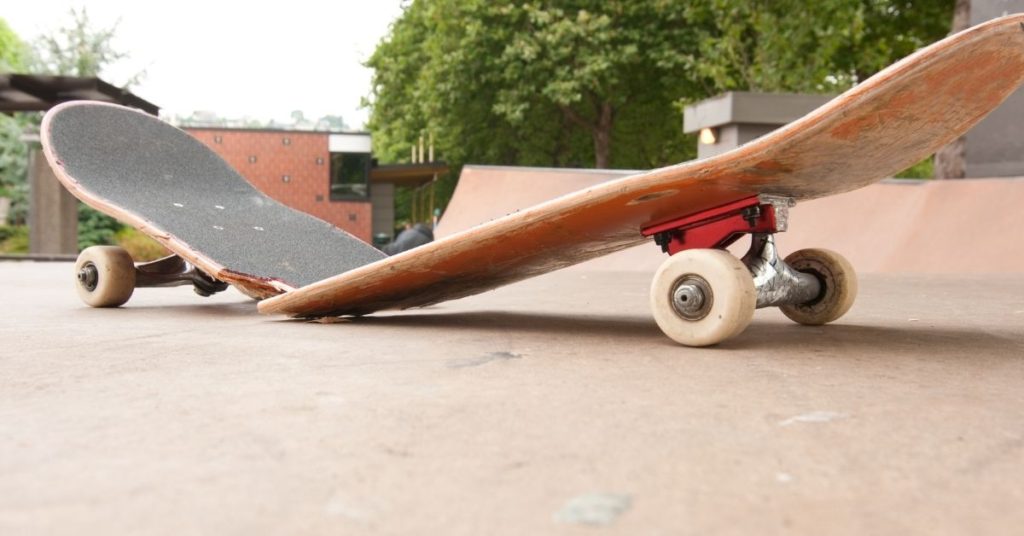
When you’re forking over a steaming pile of cash, you want to make sure everything lasts. The thing with skateboarding is that the lifespan of a setup varies drastically on how often you skateboard and what you skate.
For a beginner skateboarder who is just learning how to push, turn, or do basic tricks on the board, it’s safe to assume that a single setup can last up to 12 months or longer.
For intermediate skaters who are confident with basic tricks, starting to learn grinds and pushing their skill levels, 4 to 6 months is what you can expect out of your deck. The more durable components such as the trucks, wheels, and bearings will be useable across several different decks in the future.
Lastly, more advanced skaters can go through a setup in 1 to 2 months since they’re putting a lot more strain on their components and are more likely to snap their decks.
With all that said, your deck is typically the first thing to go in your setup. It will eventually wear down in the tail and lose pop, while even losing its shape if not properly cared for. More durable parts like the trucks and wheels can last skaters for several months or even years depending on how often you’re skating. As for bearings, with regular cleaning and lubrication, you could own a single set of bearings for several years if you really wanted.
For a more detailed explanation of the lifespan of different skateboard parts, this guide breaks down when it’s time to replace your board.
So with all this in mind, you have a solid idea of what you can expect to pay when building a custom skateboard online or at your favorite local skate shop. If you’re in need of a little extra help in terms of what brands to look for, this post outlining the best skateboard brands will be super useful!
Happy Shredding!
Brendan 🙂
